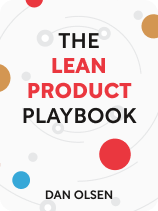

This article is an excerpt from the Shortform book guide to "The Lean Product Playbook" by Dan Olsen. Shortform has the world's best summaries and analyses of books you should be reading.
Like this article? Sign up for a free trial here.
How well do you know your customers’ needs? Are you meeting those needs better than your competitors?
Knowing how to identify customer needs is crucial for any business. By understanding what your target market truly wants, you can create products and services that stand out from the competition. This process involves calculating the value of each need and crafting a compelling value proposition.
Read more to learn the steps you can take to pinpoint and address your customers’ most pressing needs.
Identifying Customer Needs to Address
Dan Olsen writes that, after you’ve thoroughly researched your target market’s needs, you should decide which needs you want your product to address. We’ll discuss how to identify customer needs to focus on by calculating the value of each need and creating your value proposition—a description of the unique benefits your product will provide for customers.
Calculate the Value of Each Customer Need
Olsen recommends you calculate the value of each customer need by assessing two factors:
Factor 1: How important the need is to your target customer. Your product becomes more valuable when it solves a problem your customers care deeply about. The key is to cater to their major issues or concerns so your product isn’t just useful, but essential.
(Shortform note: When determining how important a need may be to your target customer, consider the universal basic needs all humans seek to fulfill. In The Personal MBA, Josh Kaufman says five needs drive people’s purchasing decisions: 1) to feel good about themselves, 2) connect with others, 3) grow and learn, 4) feel safe, and 5) avoid effort. Any needs connected to these five basic drives may be wise to consider as top priorities.)
Factor 2: How well existing products on the market meet each need. You want your product to satisfy customers more than other products on the market, so focus on customer needs that are not already met by existing products. This way you won’t have to contend with heavy competition.
(Shortform note: To discover the best unmet needs to address, In Blue Ocean Strategy, Kim and Mauborgne suggest you consider all potential customers. These include not only customers in your market who are dissatisfied with current options but two other categories of customers: 1) potential customers who have considered your industry’s options but decided not to use any because current options don’t meet their needs, and 2) potential customers who haven’t thought of your industry’s products as an option. By assessing potential customers in addition to existing customers, you may discover untapped needs and opportunities to create innovative solutions that surpass the competition.)
Olsen suggests you measure these two factors by finding and surveying your prospective customers. Gather grades or scores for each factor—for instance, have customers rank the importance of each need on a scale of one to five and satisfaction on a scale ranging from completely dissatisfied to completely satisfied. Then, plot the scores on a chart or graph and see which needs are most valuable to pursue. Olsen writes that the best opportunities are needs that users consider most important but are least satisfied by existing products on the market.
(Shortform note: This method that Olsen uses for ranking different features is called opportunity scoring. Some experts caution that while it’s useful for helping you make decisions based on facts and figures instead of assumptions, it can lead you in the wrong direction if your survey data is inaccurate. Many surveys suffer from inaccuracy for a variety of reasons, including poor sampling methods, biased questions, overly lengthy survey design, and overlooked outliers. To obtain reliable data, you should plan your sampling carefully, phrase your questions neutrally, ensure the survey is accessible and convenient, and carefully consider all responses.)
Create a Value Proposition Table
Once you’ve calculated the value of each customer need, Olsen advises you to create a table that will help you examine which needs your product will address and how you’ll address them better than your competitors. He calls this a value proposition table.
In the first column of your value proposition table, list the needs your product will address. He recommends that you focus on a limited range of needs: Choose your customers’ most important needs, and choose needs that complement each other. For example, if you’re designing a fitness tracker, add features that directly support health monitoring (like calorie counting and sleep tracking) instead of something like weather updates that are only tangentially related. Being selective about what needs your product addresses allows you to use your resources more efficiently, avoid distractions, and deliver the most value with the least amount of waste.
Olsen recommends grouping these needs into three categories:
- Essential needs—basic needs or requirements your product must satisfy to be acceptable. For example, a video editing software must be able to cut, splice, and rearrange footage or it would be useless to prospective users.
- Performance needs—expectations that increase customer satisfaction when better fulfilled and decrease satisfaction if not adequately fulfilled. For example, users would be more satisfied by high rendering speed and the ability to handle high-resolution footage.
- Bonus needs—extra features that customers don’t necessarily expect but would be excited about if you provide them. For example, a video editing software might provide a built-in library of royalty-free music.
Next, create three more columns—one for your product and two for competing products. Score how well the two competing products currently satisfy each need and how well you plan to meet each need.Fill out the rows for essential needs and bonus needs with either a “yes” or “no,” and rate each performance feature as low, medium, or high in terms of satisfaction. For example, you might rate the rendering speed as low for Competitor A, medium for Competitor B, and high for your product if you intend to deliver this benefit well.
Exercise: Discover High-Value Needs For Product-Market Fit
According to Olsen, your product must satisfy customer needs better than competitors on the market to achieve product-market fit. Consider how you can discover and fulfill your target market’s most important yet least satisfied needs.
- Who is your target customer? Jot down several of the four types of characteristics (demographics, psychographics, needs, and behaviors) that could categorize someone into your target market.
- What are some questions you can ask during customer discovery to identify your target market’s needs? How do you plan to explore these problems more deeply before you start generating solutions?
- Using your existing knowledge or after conducting some research, write down several problems or needs that your target market has. Are these essential needs, performance needs, or bonus needs?
- Write down one need that seems to be most important to your target market yet the least satisfied. What are some ways you can satisfy this need better than existing products on the market?

———End of Preview———
Like what you just read? Read the rest of the world's best book summary and analysis of Dan Olsen's "The Lean Product Playbook" at Shortform.
Here's what you'll find in our full The Lean Product Playbook summary:
- An entrepreneur’s guide to making the best product on the market
- How to create a new product without gambling on the results
- How and where to find your target market and audience






